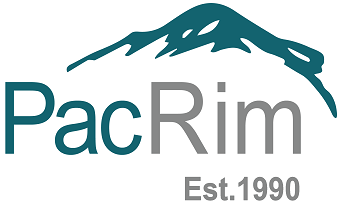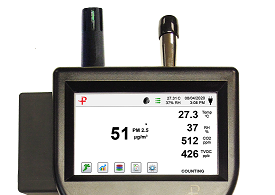Industrial hygiene is the science of anticipating, recognizing, evaluating, and controlling workplace conditions that may cause injury or illness to employees. Industrial hygienists use environmental monitoring and analytical methods to detect the extent of worker exposure and employ engineering, work practice controls, and other methods to control potential health hazards. Pacific Rim Environmental’s team of industrial hygiene professionals works with employers to provide site-specific industrial hygiene services to ensure employees are properly protected and regulatory compliance is maintained.
Air Contaminants
Common air contaminants include dusts, fumes, mists, aerosols, and fibers. Regulatory agencies have established occupational exposure limits (OELs) for exposure to many air contaminants. Pacific Rim Environmental industrial hygienists can provide employee personal exposure monitoring for the employer to ensure compliance with applicable OELs. If necessary based on results of personal exposure monitoring, our industrial hygienists can help modify existing job hazard analyses and educate employees on the proper use of personal protective equipment.
Chemical Hazards
Many chemical compounds, whether a solid, liquid, gas, mist, dust, fume, or vapor may cause human health problems. Exposure may be via inhalation (breathing), absorption (through direct contact with the skin), or ingestion (eating or drinking), or injection (through a break in the skin). Industrial hygienists can provide employers with a complete workplace exposure assessment of hazardous chemicals through the work process, ensuring that appropriate personal protective equipment is used when handling these materials. The workplace exposure assessment will also prescribe a schedule for employee exposure monitoring, if indicated, while assessing the current use of engineering and administrative controls for chemical use.
Biological Hazards
Biological hazards include bacteria, viruses, fungi, and other potentially infectious pathogens that affect human health. Industrial hygienists help identify these hazards in the workplace, and assess potential pathways for employee exposure. Some biological hazards may exist in poorly maintained buildings, such as Enterococci and Legionella. Occupations that deal with plants or animals or their products, with food and food processing, and working in healthcare may expose workers to biological hazards. Pacific Rim Environmental can audit current biohazard handling and cleaning practices and provide measurable data for achieving workplace housekeeping standards.
Physical Hazards
These include excessive levels of ionizing and nonionizing electromagnetic radiation, noise, vibration, illumination, and temperature.
In occupations where there is exposure to ionizing radiation, time, distance, and shielding are important tools in ensuring worker safety. Danger from radiation increases with the amount of time one is exposed to it; hence, the shorter the time of exposure the smaller the radiation danger.
Ergonomic Hazards
Workplace ergonomic assessments performed by our industrial hygiene team help the employer identify risks such as repetitive tasks, improper work area set up, and improper use of tools that can cause that can lead to musculoskeletal disorders. A critical element of a workplace ergonomic assessment is employee interviews, which can offer the employer a valuable snapshot of employee morale and engagement. Improvements in workplace ergonomics most often increases productivity and reduces employee health related costs.


